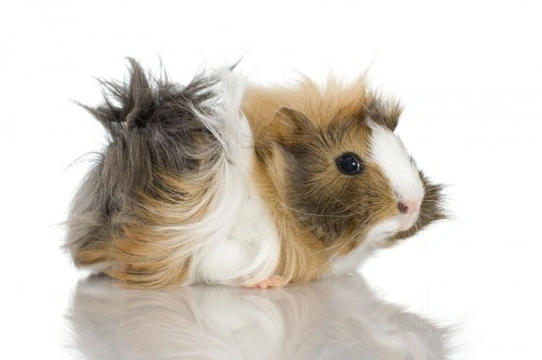
Popular Guinea Pig Breeds
The intimate relationship that humans have with guinea pigs or cavy as they are also sometimes referred to can be traced as far back as 5000 B.C. In the first instance the purpose of their domestication was to use them as a source of food. Living in abundance on the lower slopes of the Andes they were the equivalent to our rabbit in rural areas of the English landscape. It is not until the 15th Century that things change somewhat and they are introduced, by merchant traders to Europe. It is at this point that the focus alters from that of being a mere commodity to that of being a pet to be loved and admired. Unsurprisingly perhaps, it did not take long for their popularity to grow. And from the original animals many breeds have been developed. These breeds vary quite widely, from the exotic long haired show breeds to the shorter haired more easily maintained pets that we frequently see in today's pet shops. As a result of this though, several breeding organisations have been founded by the more serious fanciers. In the U.K. the British Cavy Council governs and sets standards for subsequent local clubs. There are other governing bodies in Australia, New Zealand and the United States. But each governing body sets its' own Standard of Perfection, determining within this, which breeds will be eligible for showing. Each breed comes with its' own distinctive characteristics and it is interesting to note that the most popular breeds of pet guinea pig are sometimes the ones less popular with competitive breeders.
Popular Breeds
These are generally felt to be the short haired Abyssinian, Peruvian and Sheltie and they are often bred with more of an eye to being a good companion rather than that of a good standard and this does help make them the pig of choice for many owners. Although by far the most popular pig breed seen for sale in pet stores is the American guinea pig, also known as the English Cavy.
The English Cavy
This cavy comes in a variety of colours such as cream, black, white or speckled. You will also see them in mixtures of two or three colours. And they are without doubt an obvious best choice for a first time guinea pig owner - being good-natured and hardy as well as being easy to maintain.
Dutch Guinea Pig
You can however also find other short-haired guinea pigs. One popular one is the Dutch guinea pig, which you will recognize by a primarily black coat with a white blaze down the face and a distinct marking over the back similar to that of the Dutch rabbit. Also to be considered is the crested guinea pig which has a smooth coat and a rosette on top of its head.
The Abyssinian
Known particularly for its variable coat, it grows in rosettes or whorls throughout and generally no longer than 1-2 inches. Whilst this pig does not need too much grooming an occasional gentle grooming will not harm. In showing terms the ideal Abyssinian has 8 rosettes, one on each shoulder, four across the back, one on each of the animal's hips, and two on the rump. They come in a variety of colours, shapes, and sizes. They are friendly and will engage readily and also make an ideal first pet.
The Peruvian
The Peruvian is the forerunner of all modern long haired breeds. Their hair grows continuously, sometimes to an excess of 20 inches. This of course has a bearing on the amount of time needed to care for this particular pig and is something that needs to be considered before taking the plunge. Not recommended as a first buy, most Peruvians kept as pets are regularly trimmed by a professional to keep their coat in good order. Peruvians of show standard are required to have two rosettes on either side of the rump, which creates the desired height and density. The Peruvian coat is smooth and straight and the hair naturally parts down the centre of the back, and forward over the head.
The Sheltie
A Sheltie has long hair that flows back over its body and never forward over the face as in the Peruvian. In contrast to the Peruvian, where the coat is desired to fall in an even curtain all around the body, the Sheltie standard is generally accepted to have a longer sweep of hair at the rear. Again this pig needs some extra care due to its coat.
This of course is just the beginnings and there are many, many more types of guinea pig to be found such as the fuzzy haired Rex or the curly haired Texel... as well as this new breeds are emerging all the time but perhaps one that I have a particularly soft spot for is the poor wee hairless guinea pig. It has nothing to do with looks as you may imagine but more to do with its provenance. Recently introduced into the pet industry there are two types of hairless guinea pig. First is the Baldwin which is completely hairless and second is the skinny guinea pig, which has wiry frizzy hair on the head, paws and face. In the past both these breeds have been used for laboratory research. They need no more care than the average short haired cavy, except in having a heightened sensitivity to temperature. In the main they sort this for themselves though by simply eating more to maintain body heat and metabolism... now I don't know about you but considering their rather sad and miserable past I think I can get over the odd extra cabbage leaf here and there... how about you?



